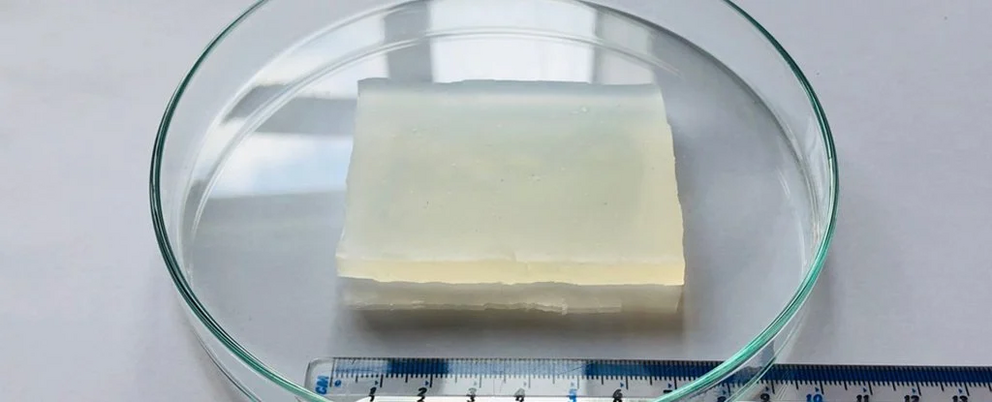New 'super jelly' is 80 percent water and can survive being run over by a car
Scientists have developed an entirely new soft-yet-strong, squishy material that's able to regain its original shape after being run over by a car – or to use a more natural example, after being walked over by an elephant.
Made up of 80 percent water, the parts of the material that aren't water enable it to act like an ultra-hard glass when it's compressed. Researchers think it's the first time a soft material like this has shown such excellent resistance to compression.
And after further development, the 'super jelly' could have a whole host of practical applications, the team behind the material says – everything from being used in soft robotics to improving the flexibility of cartilage replacements used in the human body.
"At 80 percent water content, you'd think it would burst apart like a water balloon, but it doesn't: it stays intact and withstands huge compressive forces," says chemist Oren Scherman from the University of Cambridge in the UK. "The properties of the hydrogel are seemingly at odds with each other."
Stretchy hydrogels have plenty of characteristics that make them interesting to material scientists, but they're typically crushed when compressed. The reason this 'super jelly' is different is down to its molecular structure and the way it uses crosslinks – two molecules joined with a chemical bond.
Here, barrel-shaped molecules called cucurbiturils served as crosslinks, each one holding two guest molecules in its cavity like a molecular handcuff. By doing so, these guest molecules stay in place for longer than usual.
That means the network of polymers controlling the material's mechanical properties is more tightly linked and better able to withstand compression. Overall, the researchers describe it as 'slowing down' the dynamics of the material, so its performance can range from rubber-like states to glass-like states.
"The way the hydrogel can withstand compression was surprising, it wasn't like anything we've seen in hydrogels," says chemist Jade McCune from the University of Cambridge.
"We also found that the compressive strength could be easily controlled through simply changing the chemical structure of the guest molecule inside the handcuff."
While other hydrogels are known for their toughness and their self-healing, taking the weight of a 1,200 kg (2,646 lbs) car like in the video above is not something they've been able to do before.
"To the best of our knowledge, this is the first time that glass-like hydrogels have been made. We're not just writing something new into the textbooks, which is really exciting, but we're opening a new chapter in the area of high-performance soft materials," says Zehuan Huang, a chemist at the University of Cambridge and the study's lead author.
One way in which this material might be used is as a hydrogel pressure sensor for the real-time monitoring of actions such as standing, walking, and jumping. It would be able to deform and take measurements before returning to its original shape.
Further development is required before the material is going to be ready for biomedical and bioelectronic purposes. Still, this early demonstration shows a lot of promise – like many other recent developments in hydrogel science.
"People have spent years making rubber-like hydrogels, but that's just half of the picture," says Scherman. "We've revisited traditional polymer physics and created a new class of materials that span the whole range of material properties from rubber-like to glass-like, completing the full picture."
The research has been published in Nature Materials.

